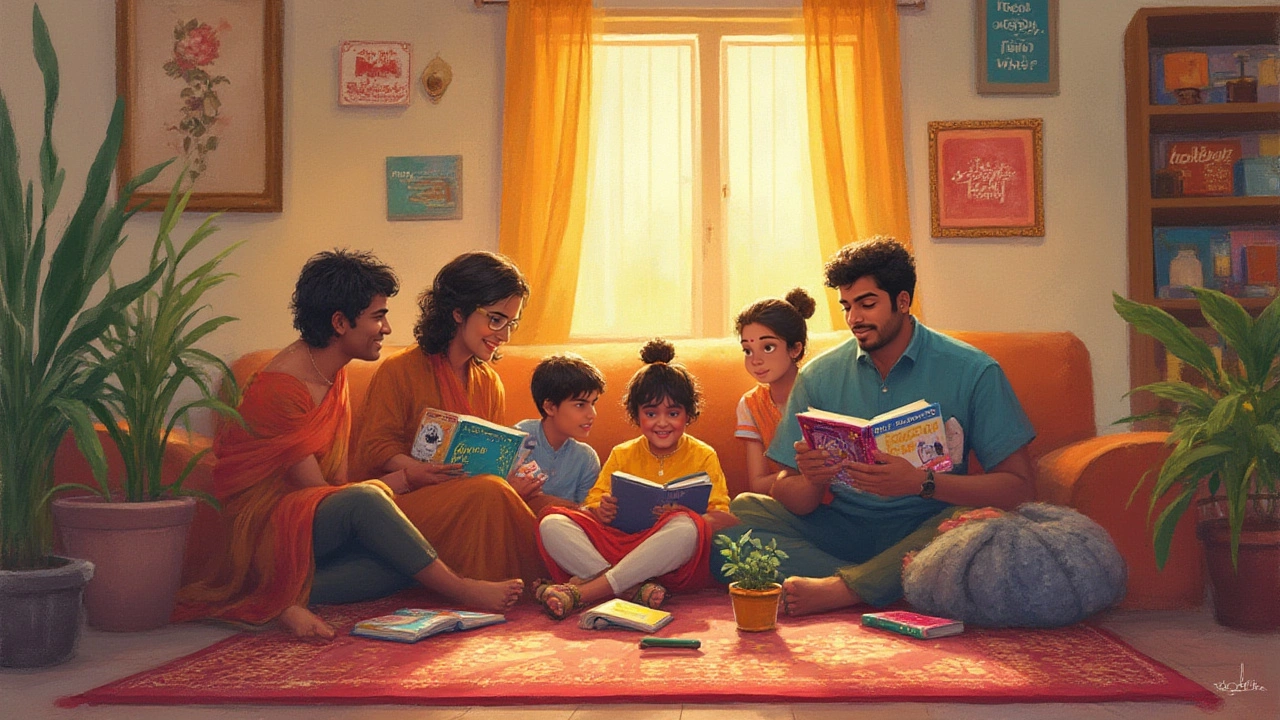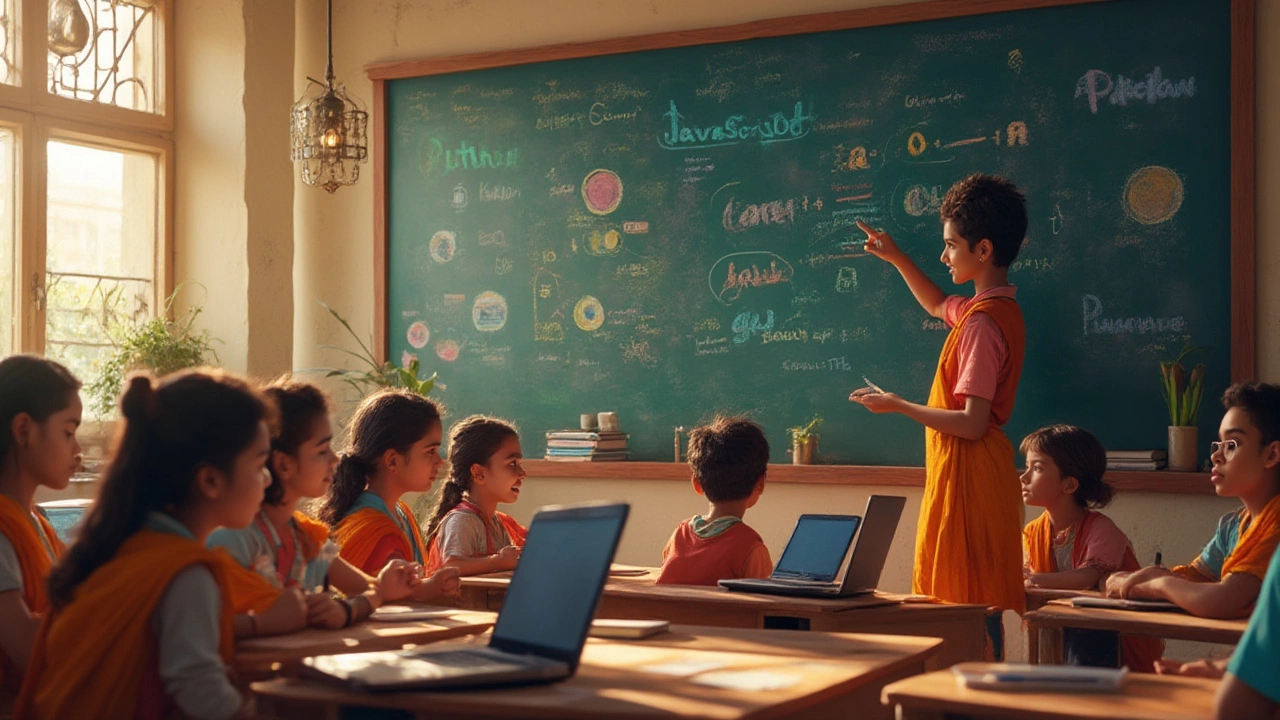Ever been tempted to crack the code and build an app, automate your work, or just finally learn what all those lines of colored text mean? You’re definitely not alone. In 2025, learning to code isn’t reserved for computer science students or hoodie-wearing Silicon Valley types. From marketers tweaking web pages to teenagers building Discord bots, coding is everywhere. But with nearly 9000 coding languages floating around (most of them obscure, don’t worry), picking your first one can feel like staring down a restaurant menu written in another language—literally.
Why Your First Programming Language Matters
Honestly, your first coding language is kind of like your first bike: it shapes how you ride, and whether you actually stick with it. Speaking from experience, the programming world can look daunting, but the good news is not all languages are created equal—at least when it comes to beginners. Some are like smooth suburban roads, others like rocky mountain trails where you’ll scrape your knees (metaphorically, but sometimes emotionally too).
Let’s talk facts: coding for beginners shouldn’t be a pain. There’s data to back this up. A 2024 Stack Overflow survey found that 41% of new coders picked Python, and of those, 88% said they’d recommend it as a first language. Why? The syntax is clear. You don’t have to memorize lots of weird rules just to print “Hello, world!” Python isn’t the only option, though. JavaScript, with its all-over-the-web presence, is another top choice. Java, C++, or Ruby have their place, but they’re like upgrading to a stick-shift before you’ve mastered a tricycle. Choose simple; get quick wins.
Now, why does it matter? If you struggle for hours just to print your name, coding suddenly looks impossible—which is straight-up not true. When you start with Python, for instance, you see results in minutes. That does wonders for your motivation and confidence. On the other hand, starting with something like C can make you spend hours tracking down a single typo. Trust me, I’ve been there. Also, the fundamentals you learn transfer over to other languages. Concepts like variables, loops, and conditionals work the same in most languages, so that first language is your foundation.
Don’t forget about the community, either. Big, beginner-friendly communities mean faster help when you’re stumped. Python has millions of users and endless free resources, videos, and forums. JavaScript, powering almost every modern website, is supported by a whopping 97% of devices connected to the web (according to W3Techs). You’re never alone, unless you’re learning something like COBOL for pure retro kicks.
And if you’re worried about job prospects? The Bureau of Labor Statistics reported in early 2025 that Python and JavaScript are the two most in-demand skills on tech job listings, both in the U.S. and globally. It’s not just tech companies, either; industries from healthcare to retail want these skills. So, what you pick first affects how quickly you can turn your new hobby into something more—be it a side project, freelance gig, or full career switch.
Table: Top Beginner-Friendly Languages by Survey Popularity and Job Openings (2025)
| Language | % of Beginners Starting | Job Postings (Global, 2025) | Ease for Beginners |
|---|---|---|---|
| Python | 41% | 320,000+ | Very Easy |
| JavaScript | 28% | 295,000+ | Easy |
| Java | 12% | 160,000+ | Moderate |
| Scratch | 7% | 3,100+ | Very Easy (for Kids) |
| Ruby | 4% | 19,000+ | Easy |
So bottom line—your first coding language isn’t about what’s hottest on TikTok. It’s about simplicity, support, and momentum. Nail those, and you’re golden.

Breaking Down the Top Beginner Coding Languages
Ready to see what you’re actually signing up for? Pull back the curtain, and you’ll find the five most beginner-friendly coding languages of 2025: Python, JavaScript, Ruby, Scratch, and Java. Each has its own quirks—good and bad. I’m not picking favorites yet, promise. Here’s what you need to know so you’re not wandering blind.
Let’s kick off with Python. It’s readable, almost like plain English, which is why even kids pick it up at school now (my cousin built a chatbot for a school science fair, and he’s 13). It’s also insanely versatile. Want to build a website, automate your boring tasks, crunch some data, or dabble in artificial intelligence? Python can do all of that. Plus, free tutorials and sample code are everywhere. I personally used Python to automate feeding times for Luna—my cat can’t talk, but at least Python makes sure she doesn’t forget to remind me.
Onward to JavaScript. If you’ve ever poked around in browser developer tools or right-clicked and peeked at a webpage’s source, you’ve seen JavaScript in action. It brings life to websites—think buttons, animations, pop-ups, interactive forms. The learning curve is a bit steeper than Python, especially the weird bits about “scope” and “this” (if you know, you know), but it’s not out of reach. Plus, anything you can view in a web browser probably runs some JavaScript.
Java is a classic, as sturdy as your granddad’s old pickup. You see it powering huge systems like banking apps, Android phones, even the backend of Minecraft servers. It’s a little more formal—lots of curly braces and strict rules, which can teach you good habits. But it can also feel like your code is wearing a suit and tie: precise, but not always beginner-chill. Still, companies love Java because it’s rock-steady and secure.
Ruby is famous for its pretty and simple syntax (almost poetic, if code can be poetry), adored by startups for building web apps quickly with Rails. While it peaked in popularity a few years ago, it’s still a pleasant place for new coders to experiment. Syntax is forgiving, community is nice, and getting real stuff built can happen even with basic skills.
Scratch deserves a mention, especially for younger people or adults who are visual learners. It uses drag-and-drop blocks instead of text—so you can focus on logic and how things flow before dealing with finicky symbols. Scratch is used by over 120 million users globally, according to the Scratch Team, and often serves as a launchpad before jumping into text-based languages.
- Python: Super-readable, used everywhere, quick learning curve.
- JavaScript: The must-have for web, solid job prospects, endless resources.
- Java: Widely used for big systems, stricter rules, boosts problem-solving.
- Ruby: Short, readable code, helpful community, used for web startups.
- Scratch: Great for kids or visual thinkers, foundation for logic skills.
One thing you’ll notice: even though some languages are “hot” one year and cool off the next, the ones above have stuck around. That’s no accident. Their communities are active, employers support them, and you can actually build things without endless frustration. Want to land a job later? Start freelancing? Automate your daily grind? These languages get you there without years of head-banging.
If you want a wild card, look into Swift (for iOS apps) or Kotlin (Android apps), but be warned—these are not as gentle for total newbies. C# is prominent in game development, but it comes with its own learning hurdles. For most folks, Python or JavaScript is where you want to plant your first flag. Besides, the famous tech recruiter Gergely Orosz reported last spring that junior developer roles using Python or JavaScript get filled 40% faster compared to those requiring C++ or Java. That’s a pretty strong nudge toward picking something you’ll actually enjoy—and get hired for.

How to Choose the Right Coding Path for You
The question that drags most people down: “Which coding language is best for me?” Answer: it depends on what you want to build. Are you dreaming of slick websites, fancy mobile apps, clever data-crunching scripts, or little automation tools? Here’s how to connect your goals to the best starter languages—and stick with it.
If you love the idea of making things for the web, like dynamic sites or interactive dashboards, JavaScript is your best friend. Every website uses it, and you can see instant results—change one line, refresh the browser, and boom. Feedback is instant, which helps keep boredom at bay. Loads of online projects, like “30 Days of JavaScript,” offer step-by-step mini-exercises. That’s how I built my first to-do app, back when my cat Luna was just a kitten and loved sitting on my keyboard, making random edits. True story.
If you want versatility—maybe automating tasks, analyzing data, or exploring artificial intelligence—Python wins hands down. Universities teach it in introductory classes because it’s gentle on beginners but powerful when you get serious. Apps like Instagram started with Python, and the language is now the backbone of many data science and machine learning workflows. Even OpenAI’s chatbot models use Python under the hood. If you’re someone who gets a kick out of charts, predictions, and puzzles, Python is the way to go.
Mobile apps? Swift (Apple) and Kotlin (Android) sit at the top, but their learning curve isn’t as beginner-friendly. Still, if you’re committed, there are amazing courses on platforms like Codecademy and Udemy. For game development, Unity plus C# is the magic combo. Don’t mind a bit of extra complexity? Go for Java if you dream of building Android apps or working in huge fintech companies—just be ready for stricter rules and more setup.
Maybe you’re not interested in a career switch and just want to automate the boring stuff at work—move numbers between spreadsheets, send emails automatically, or schedule your pets’ feeding times so you never forget (I’m looking at you, Luna). Python is perfect here. A popular book and website, “Automate the Boring Stuff with Python,” is packed with real-world examples anyone can follow, no matter their background.
Here are some tips for making your learning journey stick:
- Pick a project, not just a language. Build something meaningful to you. It could be a personal website, a bot for your favorite game, or an app that fixes a daily headache.
- Join coding communities. Free Discord servers, Reddit groups, or local meet-ups can help when you get stuck—or just for celebrating wins.
- Set tiny milestones. Making a simple calculator might sound basic, but shipping something complete boosts your confidence like nothing else.
- Use free online resources. FreeCodeCamp, W3Schools, and the Python Foundation have beginner-friendly, step-by-step lessons you can follow with zero pressure.
- Break big problems down. Even pro coders (especially pro coders) write code in tiny, testable pieces. You don’t eat a giant pizza in one bite, right?
- Don’t fall into tutorial hell. Don’t just copy code—tweak it, break it, fix it. Real learning happens with hands-on experiments, not passive watching.
And don’t get discouraged. It’s hard at first, and every coder—literally every single one—feels like they have no idea what they’re doing sometimes. Your future self will thank you for pushing through the confusing bits. You don’t have to know it all. Even if you never become a “developer,” the skills you unlock are gold in so many jobs.
Here’s the best part: your journey is yours. The language you start with doesn’t lock you down. Once you get comfortable, jumping to another gets much easier because the core ideas are the same. The best coding language for beginners? It’s the one you can stick with long enough to finish something real. Python and JavaScript make that possible for most people today—without a mountain of frustration or a steep learning cliff. So, pick one. Start small, keep it fun, and maybe teach your cat to code next. (Okay, fine, maybe not Luna—she’s more interested in the keyboard as a nap spot.)

